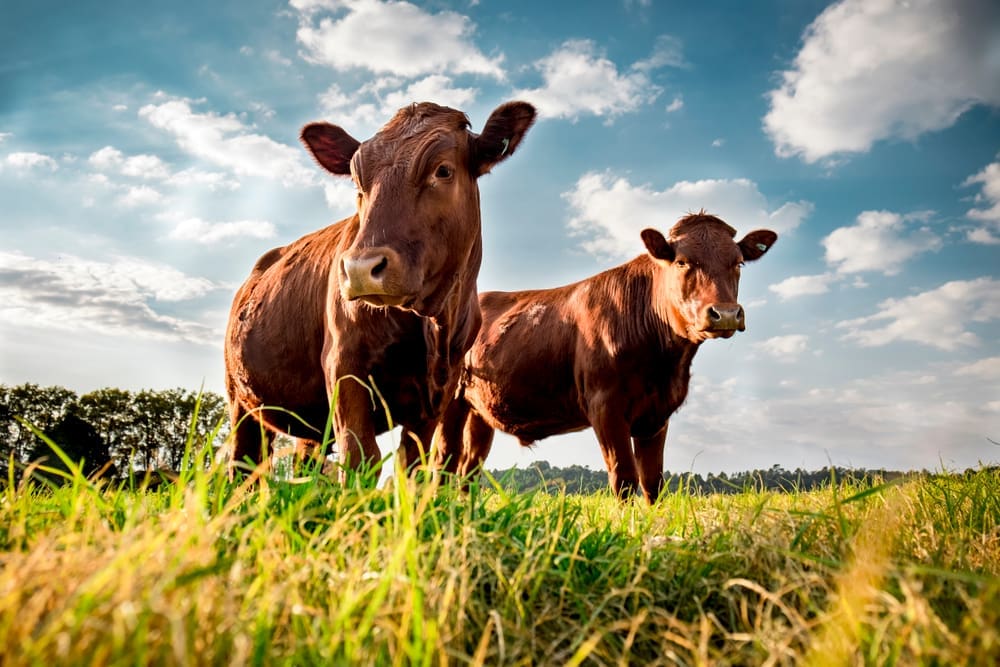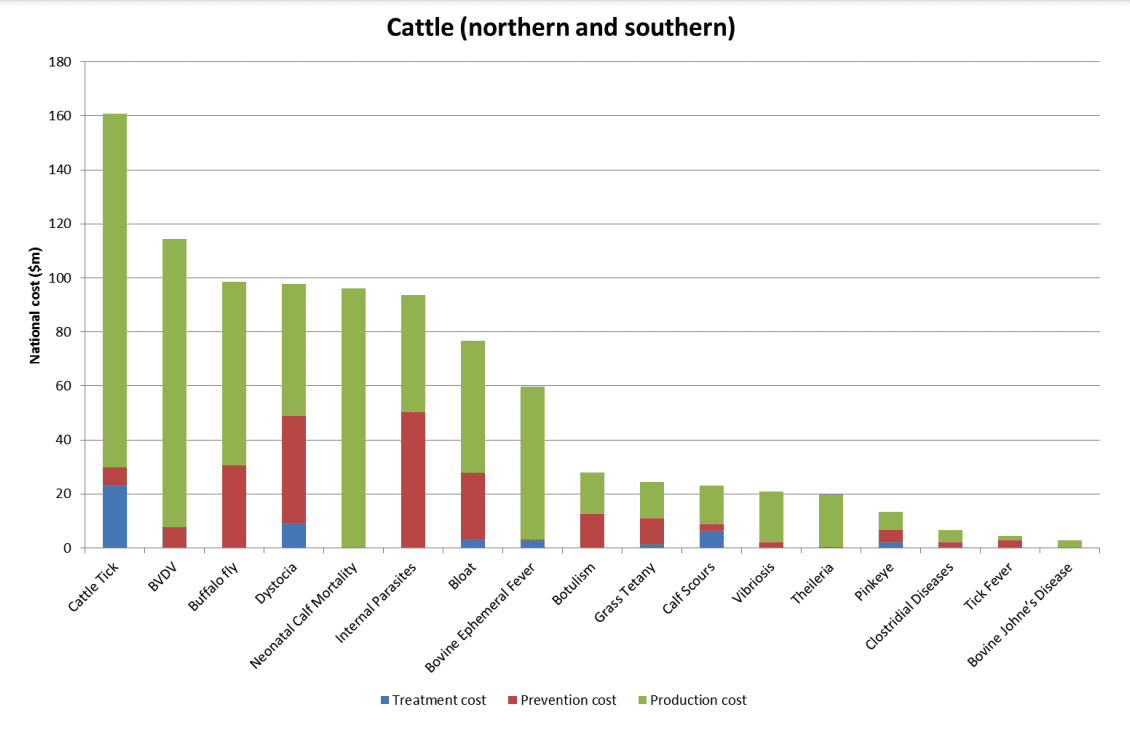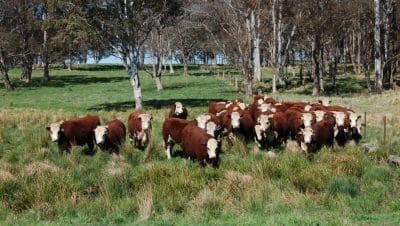
A disease known to impose the second greatest cost impact on the Australian beef cattle industry behind cattle ticks continues to cause serious production losses, despite there being a proven vaccine available.
Like COVID the disease is spread by hosts which can show little or no symptoms before causing serious impacts across infected populations.
The disease is Bovine Viral Diarrhoea Virus (BVDV), which is also commonly referred to as Pestivirus.
BVDV can reduce herd reproductive rates through infertility or abortion, while also suppressing immunity to a range of other economically significant diseases, such as Bovine Respiratory Disease (BRD).
Ongoing surveys have routinely estimated that BVDV is prevalent in about 60 to 70 percent of all Australian beef cattle herds. Meat & Livestock Australia research estimates that some 90 percent of Australian cattle herds have antibodies, reflecting at least some degree of historical exposure.
Production losses of between 25-40 percent have been recorded in herds affected by BVDV due to reduced reproductive performance, death losses and ill thrift. If BVDV stays in the herd, annual production losses between 5-10 percent commonly occur.
Meat & Livestock Australia ranked BVDV as the second most costly disease affecting beef cattle when it last produced an industry wide analysis of endemic disease and parasite impacts in 2015.

Like Covid, an effective vaccine exists, which in the case of Pestivirus has been in place for almost 20 years.
Likewise, accurate and inexpensive testing has also been available to identify and remove persistently infected (PI) cattle so they do not have the chance to spread the infection.
Yet, despite this, there has been no evident downward shift in prevalence rates in Australian cattle herds for the past 40 years.
National standard definitions and rules needed
Veterinarians concerned about the disease who Beef Central has spoken with in previous weeks say that what is currently missing are agreed national Standard Definitions and Rules around Pestivirus/BVDV management, to lay a platform for industry-wide progress on the endemic disease.
This is seen as a necessary first step to enable the industry to communicate in a standard language, govern what tests can be used, determine how test results should be interpreted, and the basis upon which herds can be declared to be free of the disease.
Barriers to more effective management of the disease are believed to include a range of factors, including a lack of knowledge of true herd impacts.
Anecdotal evidence suggests many producers do not recognise they have a Pestivirus problem, despite research suggesting the disease is prevalent in most Australian cattle herds.
Conflicting advice
Conflicting advice from various sources is another contributing factor.
Some veterinarians recommend vaccinations, where others recommend traditional treatment approaches such as the ‘deliberate exposure model’. This is where herds are exposed to a persistently infected animal with the aim of developing natural immunity within their herds. The concept is similar to the “chicken pox parties” which were a common practice before vaccines became available, where parents deliberately exposed children to others with the disease to build lifetime immunity, in the belief a childhood case would be less severe than contracting the disease as an adult.
Economic considerations and societal shifts around animal welfare are underpinning calls for greater imperative to be placed on testing in Australia’s cattle industry, to find and remove PIs and increase uptake of vaccines as safe, simple and effective ways of managing the disease.

In herds recently infected with BVDV, production losses of between 25-40 percent have been recorded due to reduced reproductive performance, death losses and ill thrift.
While vaccines are not inexpensive, the opportunity to restore a 5 to 10 percent production gain means Pestivirus is seen as an untapped area of “low hanging fruit” with the potential to deliver the next round of industry-wide productivity advances and efficiency gains in the Australia beef cattle herd if proactively addressed.
Other countries place greater emphasis on controlling BVDV
While Australia’s progress in managing BVDV remains stalled, a number of other beef cattle producing nations have focused significant attention on the same disease, seeing a worthwhile return on investment from either eradication or control strategies.
Six European countries have successfully eradicated BVDV, while several others have initiated either compulsory national control programs or voluntary control programs.
Across the ditch in New Zealand, where it is estimated the disease costs cattle producers more than $150 million a year in direct production losses and $40 million every year in ongoing control expenses, the industry has adopted a policy of using diagnostic tests and vaccines to eradicate BVDV within five to 10 years, claiming a estimated benefit cost ratio of 1.80.
An analysis of the economics of managing Pestivirus, published by LLS district veterinarian Alex Stephens from Yass in NSW, conducted in 2015 when cattle were valued well below current levels, concluded that pestivirus control was economically worthwhile, and at “worst cost neutral”.
“What vaccination or pestivirus biosecurity does do… is provide at worst cost neutral, ongoing protection of the herd while at the same time insuring against those years when the losses are more than base line and management is significantly disrupted,” Dr Stephens wrote.
Beef Central plans to explore this major disease issue with further articles in coming months. What’s your view on how Pestivirus should be managed in Australia? Add your thoughts via the comment box below.

BEF or 3 day’s impact in Northern Australia is further up the scale that’s shown above
The MLA disease impact report from 2015 has been compiled by someone who’s too far away from the coal face
The Northern Beef Research committee has tried to get more work done on the poor effectiveness of the vaccine but hasn’t succeed
If Beef Central is to explore Pestivirus further it may be worthwhile applying an appropriate method of estimating the economic impact of the disease. That was not done in the case of the MLA analysis. Application of an appropriate framework may revel that not only are the cost estimates for disease greatly overstated (possibly up to four times in the case of ticks and tickborne disease) and that Pestivirus is not that economically important to beef producers in northern Australia.
Great article,
It might be time for labs and APVMA to work on a vaccine that helps producers deal with ALL reproductive diseases AT ONCE.
In southamerica they have a combined vaccine with: 1) Vibrio 2) Lepto 3) Pesti & 4) IBR.
It can be done and will simplify the management and cost of controlling reproductive diseases.
The tools currently available for beef producers are sub-standard and it’s time to tackle it head on.
Take note where BJD sits on this list,number 17!
As we pointed out some 6 to 10 years ago to AgForce,CCA and the LNP Government that BJD was a disease of insignificance in Queensland but they all insisted on persuing the protected zone policy on BJD causing millions of dollars damage to 240 trace forward properties until we won the deregulation argument some six years ago!
The people responsible although they had egg on their face continued to move up the agricultural food chain no doubt doing more damage to our industry!
Let this be a lesson that we need to deal with diseases that prove to damage our industry and not diseases that feed the beurocrats and peoples feeling of self importance!
Wallace Gunthorpe
Chairman
BJD Action Coalition
A more effective Pestivirus vaccine would be a good start.
Protection rate of 70 to 80% is not good enough
Leave people to manage their own business – if they are going to “miss out” on profits according to the narrative – then that is how they roll.
If producers are still having reproductive issues in their herds they will pay the price – literally. Its like feeding lick – its your choice as a manager as to what inputs you use to create results you are comfortable with.
Thanks for your comment, Carina. We see it as part of Beef Central’s charter to put extension type information in front of readers that may help some of them improve productivity and profitability. If it helps only a few make better decisions, it’s worth it, in our opinion. Editor